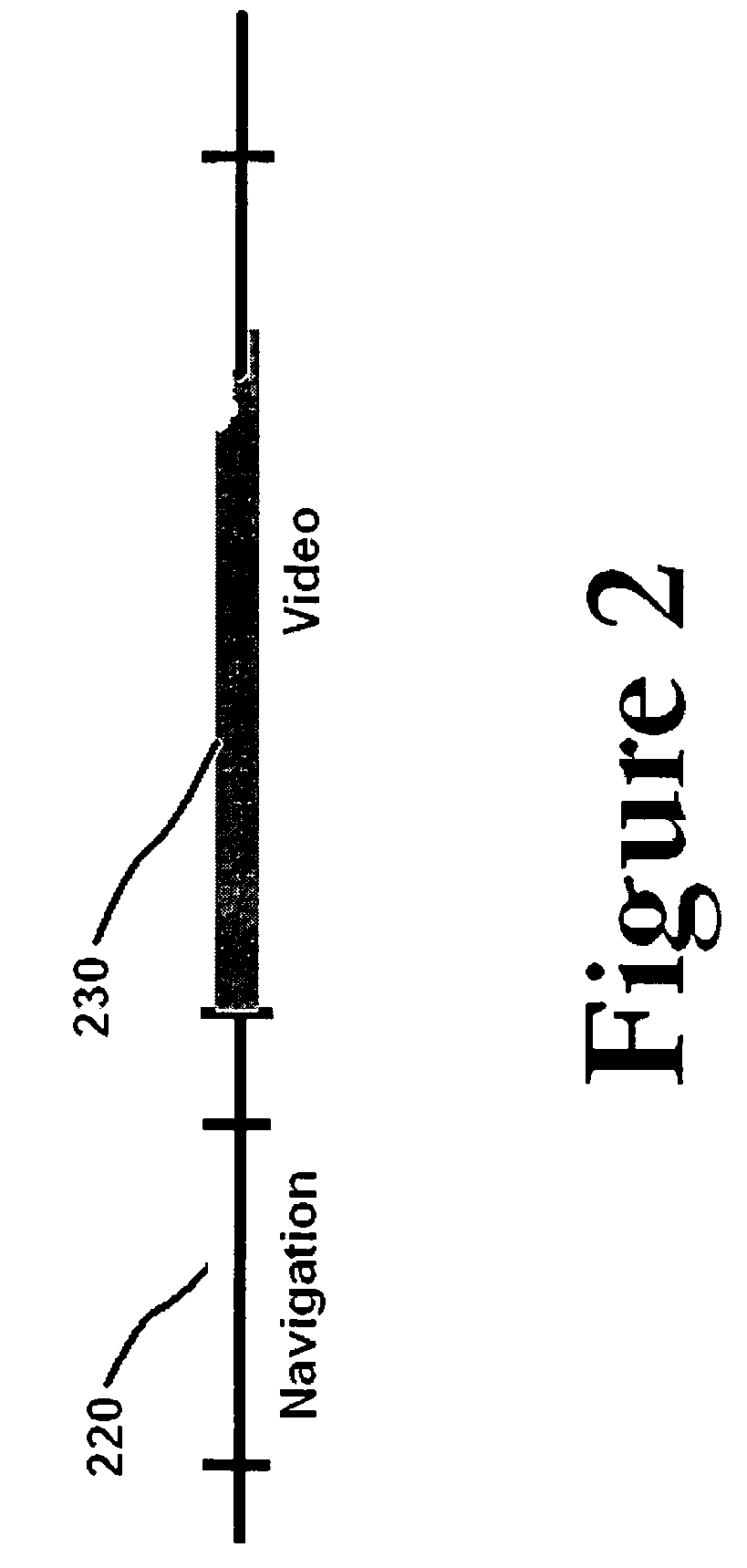Recovery of real-time video data after power loss
a power loss and video data technology, applied in the field of system software/firmware for dvd recorders, can solve the problems of preventing the recording completion, and difficult if not impossible playback of the dvd,
- Summary
- Abstract
- Description
- Claims
- Application Information
AI Technical Summary
Benefits of technology
Problems solved by technology
Method used
Image
Examples
Embodiment Construction
[0041]The system and method of the present invention comprises a number of algorithms of subroutines which enable data recovery from a DVD or the like where recording has been interrupted prior to completion of the recordation cycle. A number of different subroutines are provided to perform different functions as well as accommodate the different data formats and standards discussed above. A first algorithm comprises a method for Stream Traversal to recover data from a DVD. Subsequent algorithms may use this stream traversal technique to recover data for different DVD formats.
[0042]Stream Traversal is the algorithm used to reconstruct stream information that is previously recorded. Streams compliant to the DVD and DVD like recording standards store video information in units called VOBUs (Video Object Units). Each VOBU typically encodes a small fixed duration of video between 0.4 to 1.0 seconds and comprises a number of MPEG-2 frames. The VOBUs are arranged linearly on the recordabl...
PUM
 Login to View More
Login to View More Abstract
Description
Claims
Application Information
 Login to View More
Login to View More - R&D
- Intellectual Property
- Life Sciences
- Materials
- Tech Scout
- Unparalleled Data Quality
- Higher Quality Content
- 60% Fewer Hallucinations
Browse by: Latest US Patents, China's latest patents, Technical Efficacy Thesaurus, Application Domain, Technology Topic, Popular Technical Reports.
© 2025 PatSnap. All rights reserved.Legal|Privacy policy|Modern Slavery Act Transparency Statement|Sitemap|About US| Contact US: help@patsnap.com



